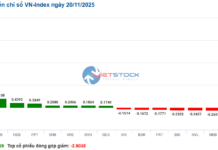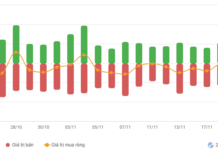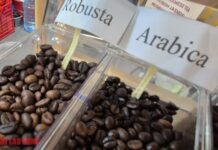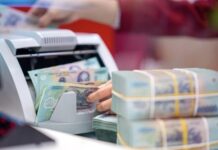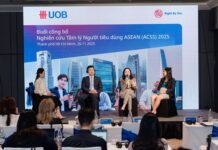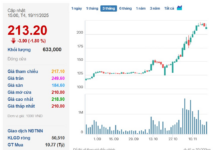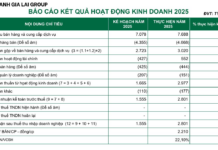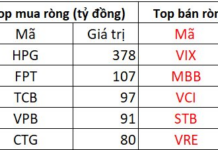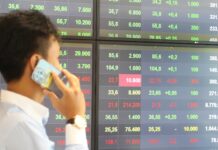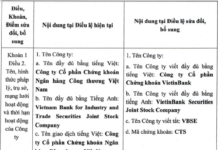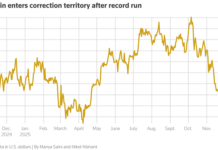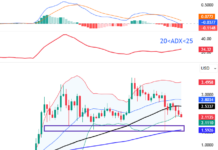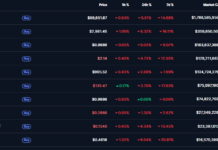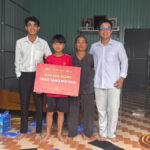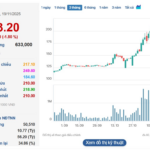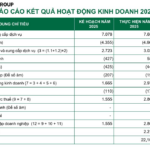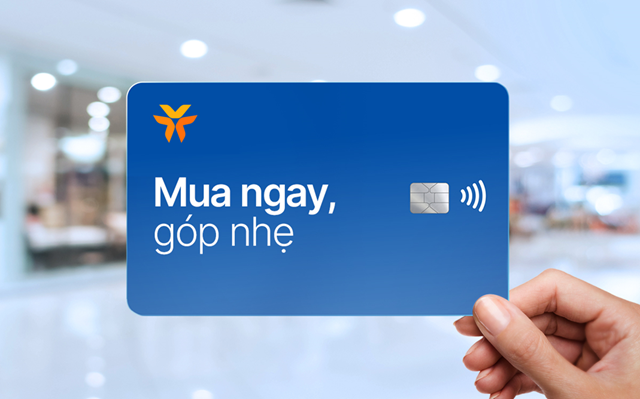The 4th season of the Hanoi International Techcombank Marathon was officially launched under the auspices of the Hanoi People’s Committee and the Hanoi Department of Culture and Sports. Strategically sponsored by Vietnam Technological and Commercial Joint Stock Bank (Techcombank) and co-organized by Sunrise Events Vietnam (SEV), the event promises to be a landmark occasion. On October 5th, over 13,000 athletes from Vietnam and around the globe will compete on a route that winds through Hanoi’s historic and cultural landmarks, embodying the spirit of “Running for a Superior Vietnam.”
The 4th Hanoi International Techcombank Marathon marks the return of this inspiring sports event, attracting nearly 1.5 times more participants than the previous season. With a meticulously designed route passing through Hanoi’s iconic heritage sites, the marathon aims to deliver a unique experience. It seamlessly blends cutting-edge technology, Vietnamese cultural symbols, and international standards, ensuring a memorable and impactful event.
During the opening ceremony, Techcombank donated 2 billion VND to the Hanoi Poverty Alleviation Fund, the Hanoi Children’s Support Fund, and the Hanoi Basketball, Cycling, and Motorsports Federations. This initiative aligns with Techcombank’s strategic vision of fostering a better life, supporting communities, and fulfilling its corporate social responsibility for sustainable development.
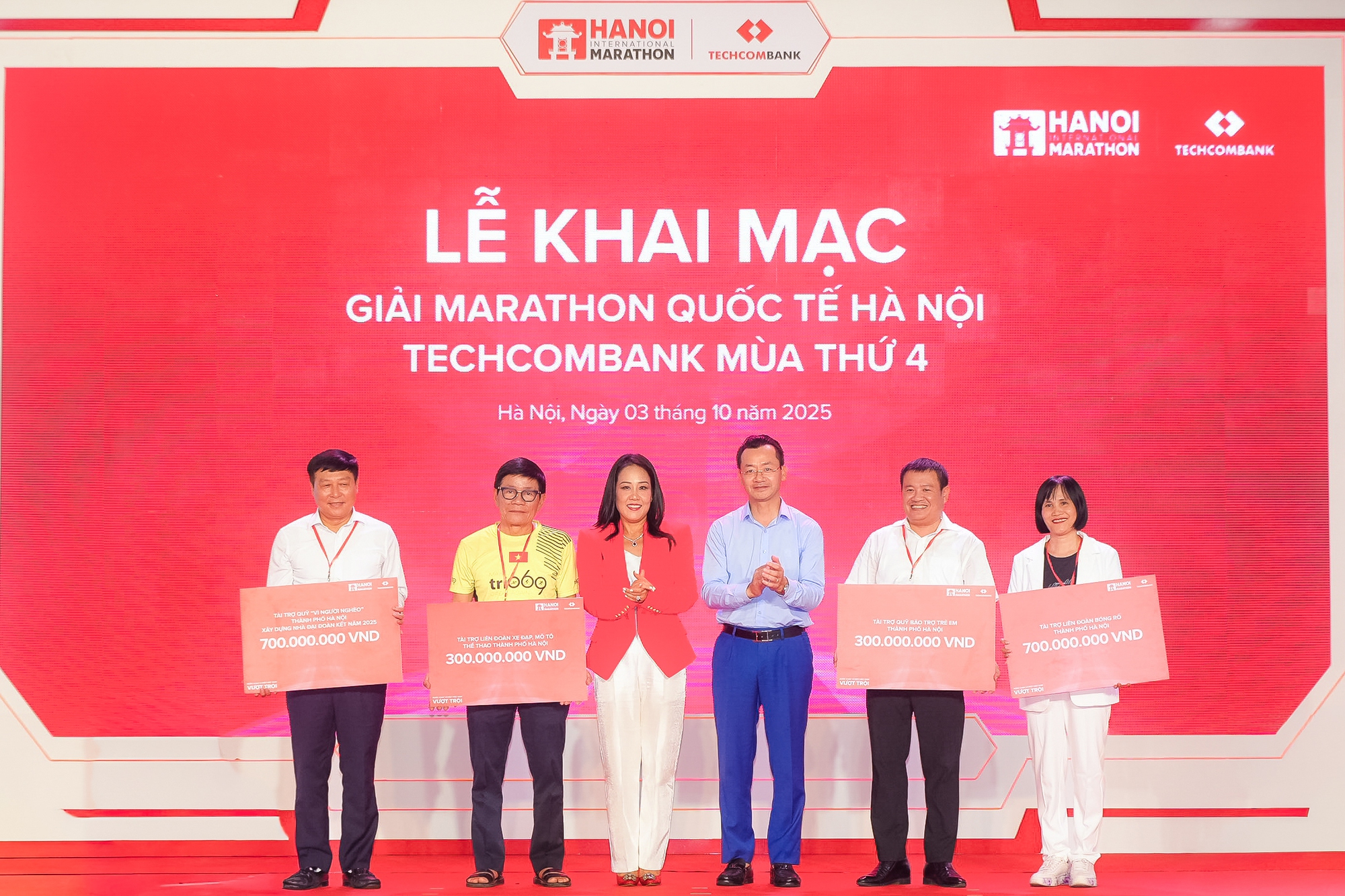
Addressing the ceremony, Ms. Vu Thu Ha, Vice Chairwoman of the Hanoi People’s Committee, stated: “Building on the success of previous seasons, the 4th Hanoi International Techcombank Marathon in 2025 continues to solidify Hanoi’s position on the regional and global sports map. This event is more than a race; it’s a journey for athletes and residents to experience Hanoi’s vibrant life, stunning landscapes, and millennia-old cultural heritage. The Hanoi People’s Committee will ensure seamless coordination with organizers to deliver a safe, professional, and unforgettable event for athletes, locals, and international guests.”
Immediately following the opening ceremony, the 2025 Marathon Village opened its doors at Vinhomes Riverside Long Bien. This dynamic space showcases leading brands in sports, health, nutrition, and lifestyle. The Techcombank Expo stands out with its innovative technology solutions and unique exhibits themed “Technology and the Future.”
This season’s merchandise collection draws inspiration from the Khuê Văn Các, a symbol of Hanoi’s intellectual and cultural heritage. The design features “intersecting curves,” representing flexibility, connectivity, and the collective strength of the community.
A highlight of this season is the integration of AI technology on the race route, providing personalized videos for all participants. Within 24-36 hours post-event, athletes will receive a short video capturing their memorable moments during the race.
On race day, over 13,000 athletes from 51 countries and territories will compete, making Hanoi a global hub for remarkable runs. The route passes through iconic landmarks such as the Ho Chi Minh Mausoleum, Long Bien Bridge, and the National Assembly, offering athletes a blend of physical challenge and cultural immersion. Notably, the 21km race features an 81-year-old participant, inspiring all with the power of determination and passion for sports.
The event also features prominent Vietnamese athletes, including national record holders Hoang Nguyen Thanh and Hoang Thi Oanh, and SEA Games 32 gold medalist Nguyen Trung Cuong. The “Sub 3 Express Train,” comprising nearly 80 runners who have completed marathons in under 3 hours, sets a new record in scale and ambition, symbolizing the pursuit of excellence and inspiring thousands to aim higher.
Mr. Jens Lottner, CEO of Techcombank, remarked: “Through the Hanoi International Techcombank Marathon and other CSR initiatives, Techcombank has made significant contributions to the Hanoi community. In its fourth season, the marathon transcends sports, connecting culture, tourism, and heritage, while promoting Hanoi as a vibrant and admired global destination. It’s an opportunity for athletes to share the spirit of sports, foster national pride, and drive positive societal change. Every step taken contributes to building a new Vietnam, where individuals are empowered to aspire, grow, and excel daily.”
Mr. Rob Zamacona, CEO of Sunrise Events Vietnam, added: “The 4th Hanoi International Techcombank Marathon bridges tradition and ambition. In Hanoi, a city of thousand-year-old heritage, every step reflects the resilience and spirit of the running community. Aiming to inspire 100 million Vietnamese to unlock their potential through sports, we’ve elevated the event with a safe, optimized route passing 37 landmarks, AIMS-certified distances, and a world-class experience in the heart of Hanoi. This year, over 13,000 athletes will compete, with live broadcasts on VTV and interactive activities at the Marathon Village and online platforms. Ensuring safety and a seamless experience for all remains our top priority.”
The entire marathon and award ceremony will be broadcast live on VTV Go, VTV Sports Fanpage, VTV Sports YouTube, and Techcombank Vietnam’s official Fanpage.

Following the opening ceremony, the 4th Hanoi International Techcombank Marathon held a press conference to address media and athlete inquiries.
Responding to journalists, Ms. Thai Minh Diem Tu, Director of Techcombank’s Marketing Division, emphasized that the marathon has become a beloved and anticipated event in Hanoi’s sports community.
This year’s event stands out with its significantly larger scale. While the first season attracted 7,000 participants, this year boasts over 13,000, including nearly 1,000 children. The organizational quality and execution have been highly praised.
Another innovation is the use of AI technology to create free personalized videos for all participants. Ms. Diem Tu noted that the “Create AI Video – Become a Techcombank Marathon 2025 Ambassador” campaign generated over 50,000 videos in two weeks, inspiring widespread engagement by merging sports with modern technology.

When asked why Techcombank consistently supports the Hanoi International Marathon over other events, Ms. Thai Minh Diem Tu explained: “We believe a superior Vietnam is built not only on economic strength but also on a healthy, united, and aspirational community. For years, we’ve committed to the Hanoi International Techcombank Marathon as part of our long-term strategy to enhance the quality of life for Vietnamese people. ‘Running for a Superior Vietnam’ is a message that inspires a healthier, more united community, leaving a positive legacy for future generations.”
Ms. Diem Tu, a marathon runner herself, has participated in 4 of the world’s 7 most prestigious marathons. She expressed pride in running through Hanoi’s beautiful and historic landmarks, cherishing the experience.
UOB Vietnam Bank Raises Over VND 940 Million to Enhance Digital Education for Children Through the 2025 UOB Heartbeat Run
The UOB Heartbeat Run 2025, hosted by UOB Vietnam, brought together over 2,000 employees, their families, clients, and business partners last weekend (September 13th) at P2 Park, Phu My Hung, Ho Chi Minh City.
“Continuing the Journey of Heartfelt Sharing”
On August 22, 2025, over 500 Sacombank employees in Ho Chi Minh City rolled up their sleeves and took part in the 13th blood donation drive, “Sharing from the Heart.” Organized by the Sacombank Trade Union and the Ho Chi Minh City Blood Donation Center, this heartfelt initiative saw a collection of 720 units of blood, ensuring a robust reserve for emergency transfusions and medical treatments across healthcare facilities in the area.
24 Years of Community Commitment: Hoa Sen Home Extends Humanitarian Legacy of The Hoa Sen Group
“For The Hoa Sen Group, sustainability goes beyond mere numerical growth and profitability. We strongly believe that our business success is intrinsically linked to our social responsibilities.”

